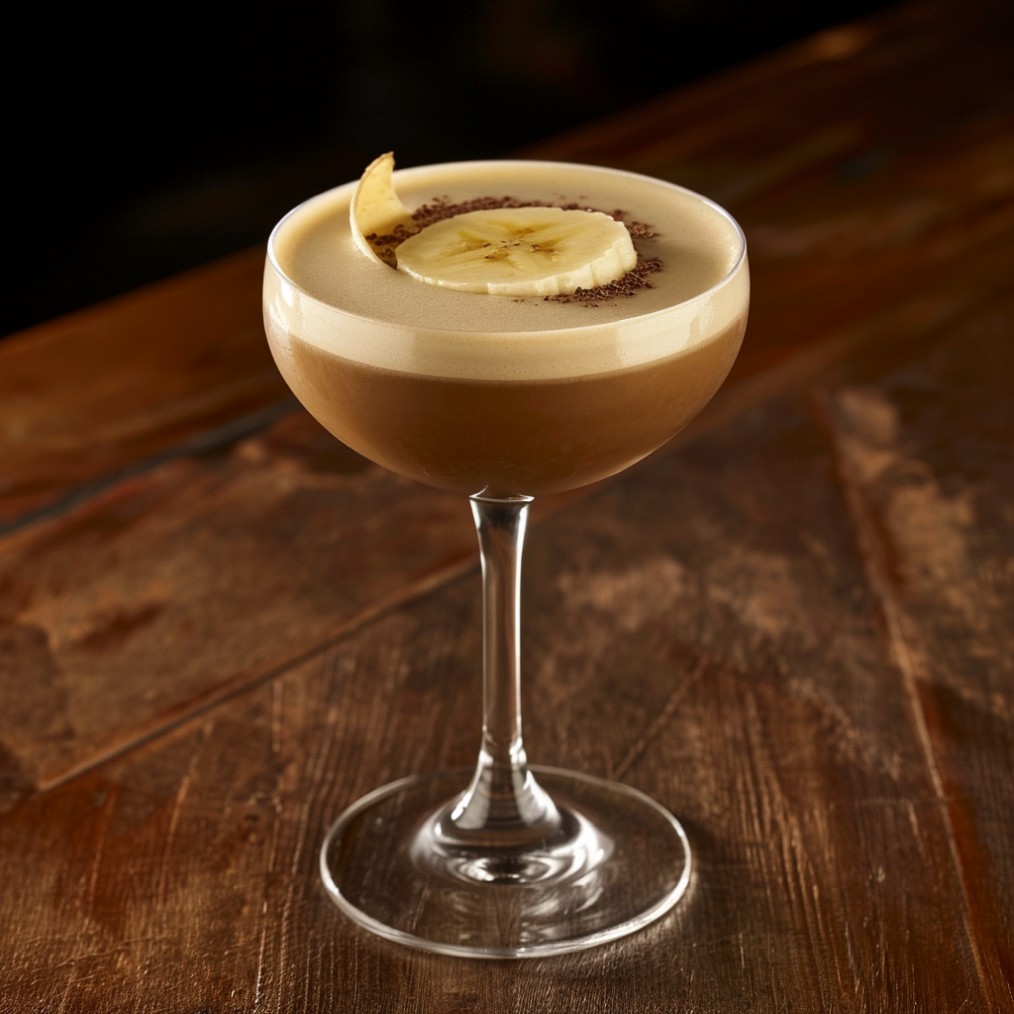
📋 Nutrition Facts
Main Alcohol Gin
Alcohol 15%
Calories 200 calories
Fat 0g
Protein 0.5g
Carbohydrates 12g
Prep time 2 minutes
Dive into the world of the Monkey Gland, a cocktail that’s as quirky as its name! Imagine a dance of citrus and anise flavors, with a history as colorful as its appearance. We’ll explore its storied past, taste sensation, and how to craft your own. Ready to shake up something extraordinary? Let’s get mixing! ⬇️
History
The Monkey Gland cocktail was born in the roaring 1920s in Paris. It’s named after a rather odd medical procedure that was believed to increase longevity. This drink has stood the test of time, still popular nearly a century later.
- The Monkey Gland is named after a surgical technique by Dr. Serge Voronoff.
- It was created at Harry’s New York Bar in Paris, a hotspot for American expatriates.
- The cocktail gained fame during the Prohibition era, offering a taste of rebellion.
The taste of a Monkey Gland?
A sip of Monkey Gland cocktail is a burst of sweet and sour, with a mysterious hint of licorice. It’s a refreshing blend that tickles the palate and leaves you wanting more.
I personally find Monkey Glands delightful because they offer a unique flavor adventure, different from any other cocktail.
Interesting facts about Monkey Gland
- The grenadine in the cocktail adds a touch of sweetness and a vibrant red hue.
- Despite its name, there are no bananas or monkey-related ingredients in it!
- The addition of absinthe gives the Monkey Gland an intriguing herbal undertone.
Ingredients 📃
- Gin: 2 oz (60ml)
- Orange juice: 1 oz (30ml)
- Grenadine: 1 tsp (5ml)
- Absinthe: 1 dash
A cocktail glass is the traditional vessel for a Monkey Gland. Its wide brim allows the aromas to tantalize your senses, enhancing the experience. Alternatively, a chilled martini glass can add an extra touch of class.
Recipe. How to make Monkey Gland 🍹
- Coat the inside of a cocktail glass with a dash of absinthe.
- Mix 2 oz of gin and 1 oz of orange juice in a shaker with ice.
- Add a teaspoon of grenadine to the shaker and shake vigorously.
- Strain the mixture into the prepared glass and serve immediately.
While the Monkey Gland is a treat for the senses, it’s also sweet. If you’re watching your sugar intake, consider using a natural sweetener or reducing the grenadine. Remember, gin’s botanicals can be beneficial in moderation, but this drink is best enjoyed occasionally.
Food Pairings
Finding the right food to pair with a Monkey Gland can elevate your cocktail experience to new heights. Let’s explore some delectable matches that harmonize with its vibrant flavors.
Spicy Appetizers
The citrus notes of a Monkey Gland cut through the heat of spicy foods, making it a perfect accompaniment to zesty starters like buffalo wings or jalapeño poppers.
Grilled Seafood
The refreshing tang of the cocktail complements the smoky, delicate flavors of grilled shrimp or calamari, creating a symphony of taste in your mouth.
Dark Chocolate Desserts
For a surprising twist, pair a Monkey Gland with a bittersweet chocolate dessert. The contrast of the sweet and sour drink with the richness of the chocolate is truly indulgent.
I adore the Monkey Gland for its playful dance of flavors, especially the way the absinthe whispers of mystery with every sip.
Bartender Advice
- Always use freshly squeezed orange juice for a brighter, more natural taste.
- Chill the glass before serving to keep the drink crisp and refreshing.
- For a balanced flavor, measure the grenadine carefully; too much can overpower the other ingredients.
Now that you’ve mastered the classic Monkey Gland, in the sections below we’ll shake things up by showing the customizable elements you can alter and introducing a range of exciting variations to try in your next concoction.
What you could change in Monkey Gland
- Gin: Swap for vodka if you prefer a smoother, less botanical spirit.
- Orange Juice: Use blood orange juice for a richer, more exotic flavor.
- Grenadine: Experiment with pomegranate syrup for a more authentic taste.
Monkey Gland Variations
Banana Gland
- Ingredients: Add half a banana to the original ingredients.
- Recipe: Blend the banana with the other ingredients for a tropical twist.
Green Gland
- Ingredients: Substitute absinthe with green Chartreuse.
- Recipe: Mix as usual and enjoy the herbal complexity it brings.
Smoky Gland
- Ingredients: Use a dash of smoky mezcal in place of gin.
- Recipe: Combine as directed to add a mysterious smokiness.
For a non-alcoholic version of a Monkey Gland, simply skip the gin and absinthe. Mix orange juice with a bit of grenadine for a sweet and colorful mocktail that everyone can enjoy.
Q&A
Can I make a big batch of Monkey Gland for a party?
Absolutely! Mix up a large batch without ice and chill it. When you’re ready to serve, add ice to individual glasses and pour away.
What’s the best type of orange juice to use?
Fresh is best! The zestier the juice, the more vibrant your drink will be. Avoid the extra sugar – nobody needs that.
Is there a substitute for absinthe?
You bet! Try Pernod or any other anise-flavored liqueur. It’ll still have that hint of licorice-like flavor.
Can I make a non-alcoholic Monkey Gland?
Of course! Just leave out the gin and absinthe, and you’ve got a fruity mocktail that’s just as fun.
What kind of gin works best in a Monkey Gland?
Go for a classic London dry gin for its clean, pure botanicals. It’ll complement the other flavors without overpowering them.
How can I sweeten my Monkey Gland naturally?
Try agave syrup or honey. They’re more natural than processed sugars, and they blend in smoothly. Plus, they add their own subtle flavors.